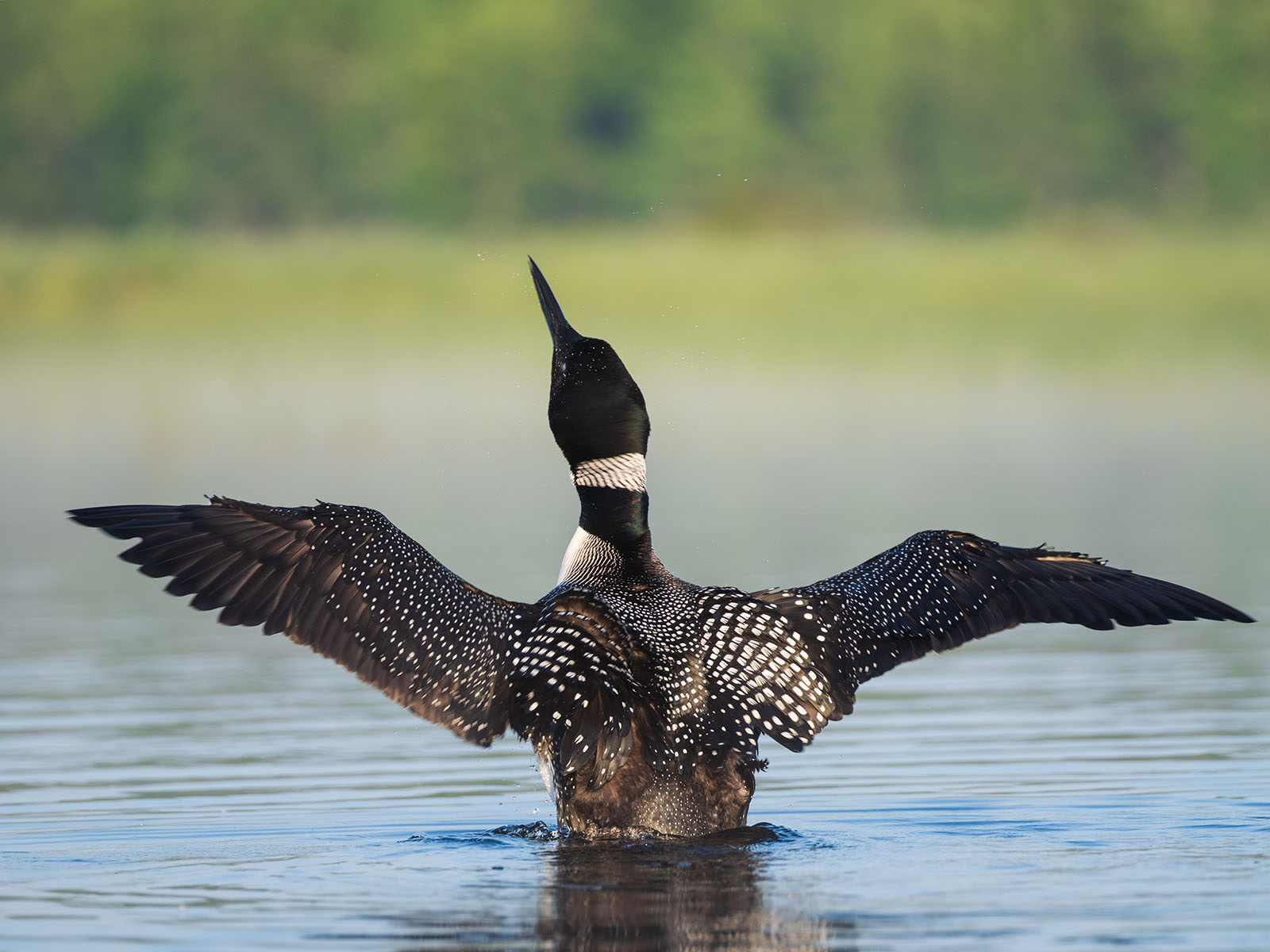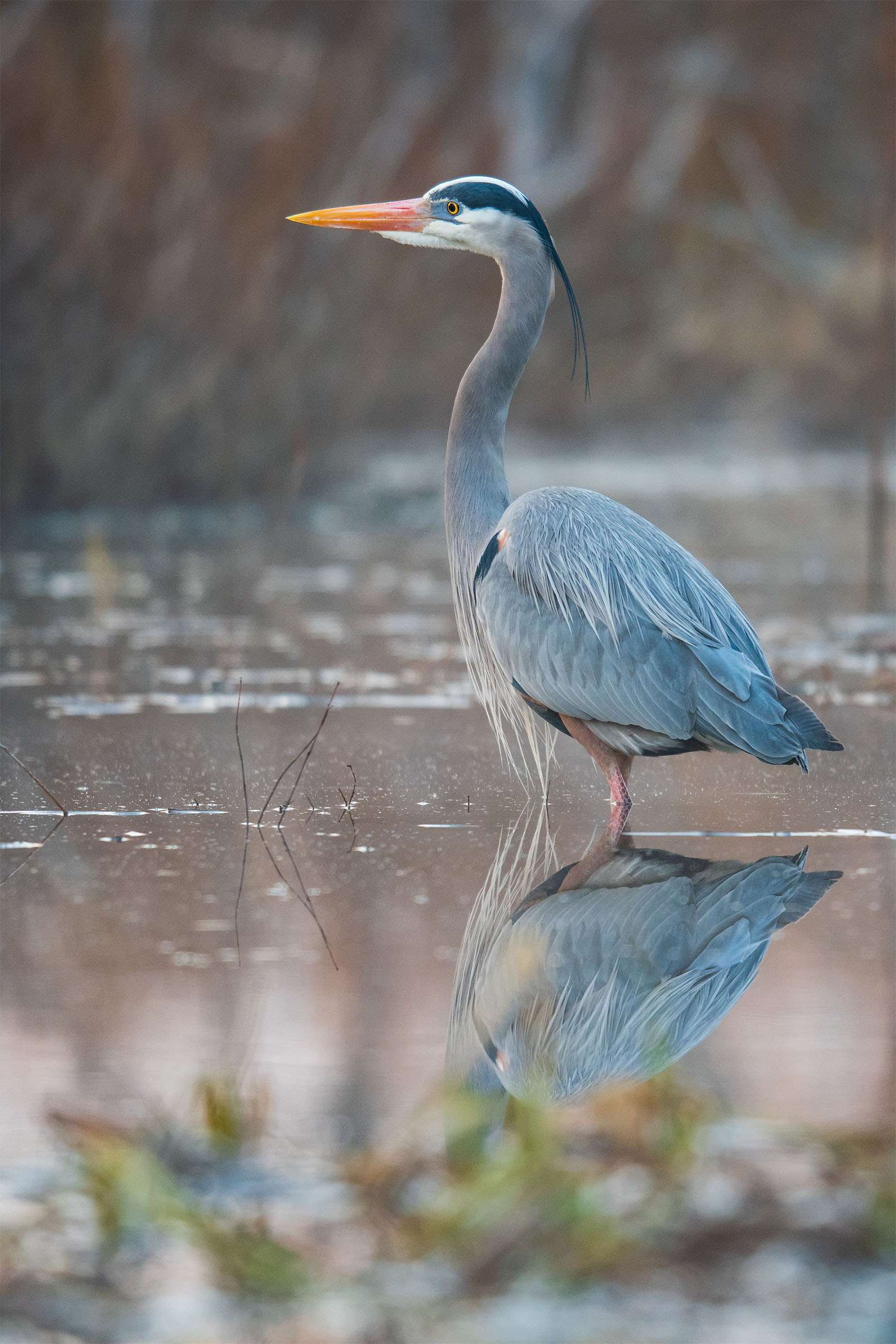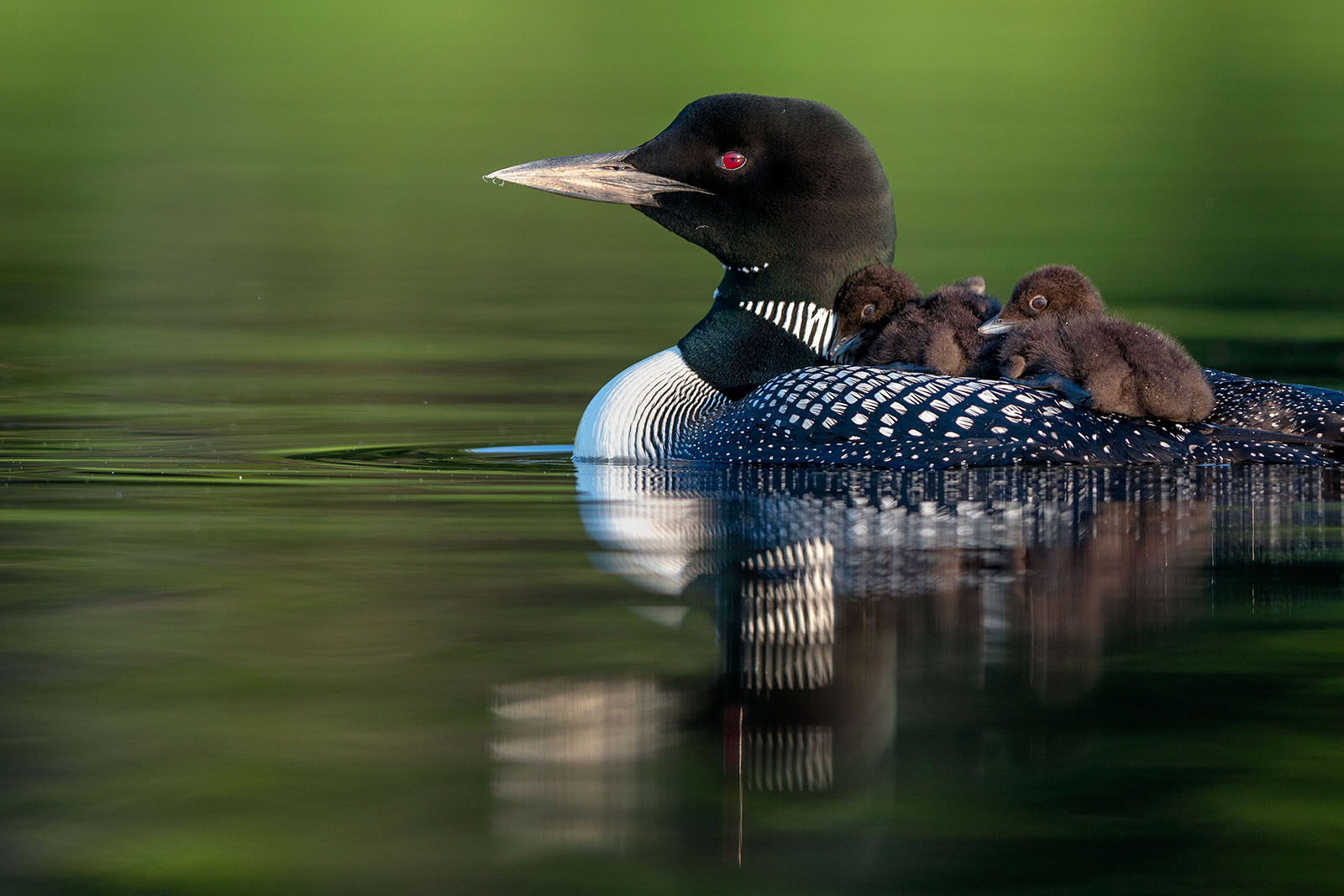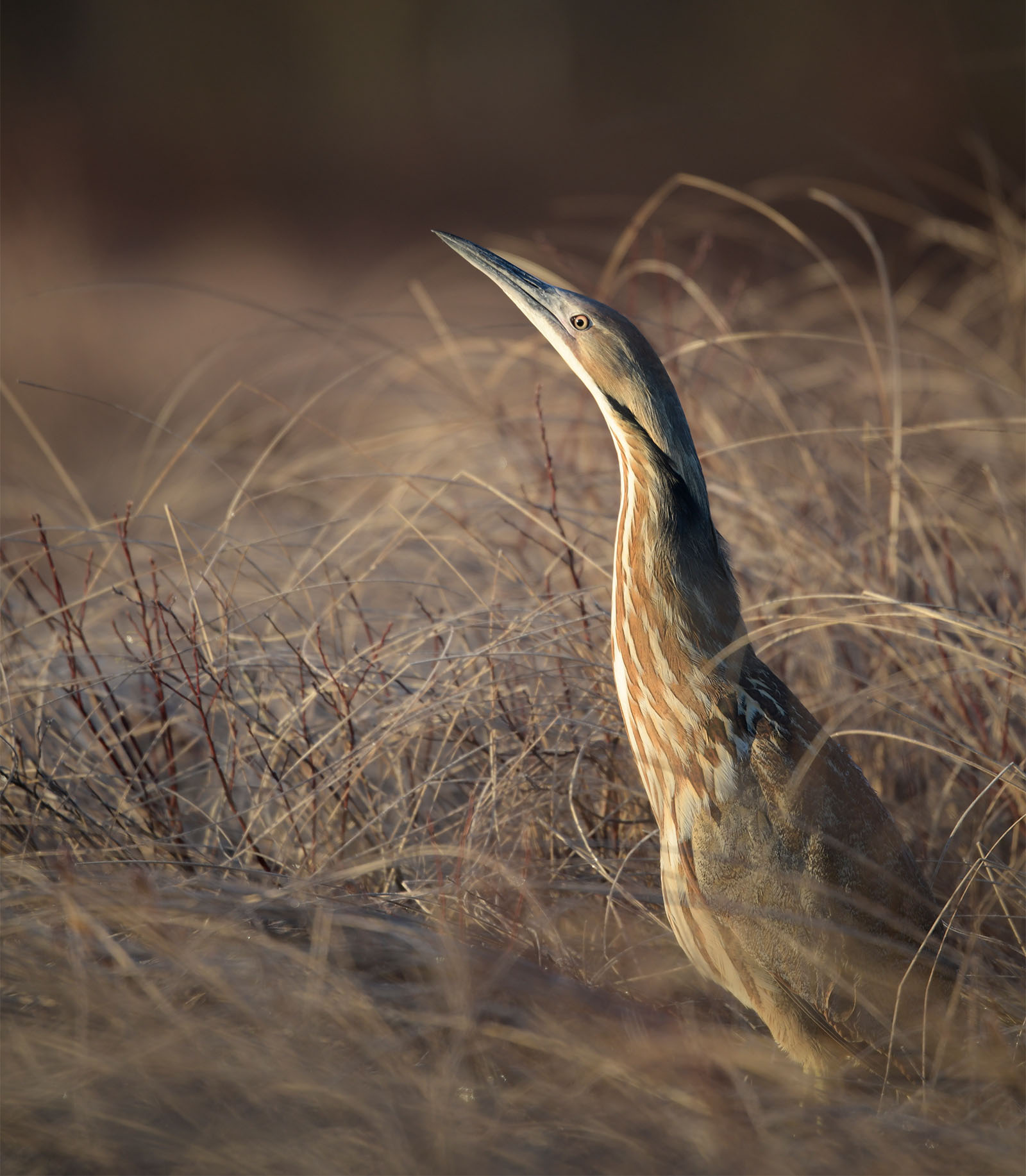When you want to get close to water birds, there’s no substitute for being out on the water.
Personally, I use a kayak designed for fishing because it is a little wider and more stable. It has more open space around the sitting area too, which allows me to easily bring along and use my camera gear. I will be writing from the context of photographing from a kayak, but of course, small boats or canoes can work too.
What are the advantages of photographing from a kayak?
You can get closer to your subject
When photographing water birds from the shore, you are severely limited in a few ways. You can’t simply get closer to your subject. Suppose you are photographing swimming ducks. If the ducks decide to swim away, you’re out of luck. Even if a bird merely changes direction, it may make capturing a nice shot from land impossible.

The low shooting angle is great for wildlife
The natural seated position in most kayaks is very low, which makes for an excellent perspective for wildlife photography on the water. With a larger water bird, such as a heron or loon, the natural shooting position from my kayak is close to level with the subject’s eyes. This offers a very good shooting angle.
You can silently wait for your subject
An advantage of something like a canoe or kayak is that you can move around on the water very quietly. With practice, you can paddle nearly silently on the water, which gives you the ability to get fairly close without disturbing wildlife. Alternatively, I sometimes find an area with a nice background and good light and simply wait for a subject to come toward me.

A kayak is agile and maneuverable
One of my favorite subjects to photograph is loons. They’re photogenic birds, for starters, but they’re also an exciting and interesting subject. They are incredible swimmers and can cover great distances while underwater. A kayak is a quick and maneuverable craft, which provides me a good opportunity to be in the right position when a loon breaches the water. Even performing a 180-degree rotation is quite easy in a kayak, which is not so with larger, heavier watercraft.
Accessible gear
I keep my gear in a waterproof bag between my knees in the kayak. When actively shooting, I leave the bag open. Bringing the camera up to shoot is very quick from this position. The wider bottom of a kayak designed for anglers makes it quite stable as well, which is good when changing direction to get in a better position to photograph a moving subject.
Tips and tricks
As is always the case with wildlife photography, respecting the animal is of utmost importance. It’s important to be aware of your surroundings and your location, especially if you are busy shooting from the kayak.
You must be careful not to drift too close to a subject. When photographing from a kayak, it may be tempting to get closer than you should to your subject. When in doubt, it’s always best to be overly cautious. It’s also important to pay close attention to your subject and look for signs of distress, which may indicate that you are getting too close to a nesting area or that a potential predator has an animal on edge.

As far as practical tips are concerned, it’s important to keep your gear dry. There may be some splash as you paddle, which can easily land on your camera and lens inside the kayak. I always bring some small towels to dab water off the gear, paying especially close attention to the area around the memory card and battery compartments. And of course, being safe on the water, in general, is important, so be sure to take proper precautions.
I usually go out around sunrise, as this is the time when the water is most likely to be calm. While no weather forecast is 100 percent accurate or reliable, it’s particularly important to check for wind speed and direction. Depending upon the shape of the pond or lake and surrounding topography, certain wind directions may be favorable.
Non-wildlife photography
While I’ve been primarily discussing wildlife photography, a kayak is also useful for general landscape and nature photography. You can use your kayak to get different angles on interesting areas around a lake or pond. You can also use the kayak to get close to certain vegetation for close-up shots, such as water lilies. Any time you can get a different perspective on a subject, you introduce the opportunity for interesting images.

Ultimately, one of the most useful tools in my wildlife photography kit is not a camera or lens, it’s my kayak. It has given me photographic opportunities I would otherwise not have had. It’s good exercise, too, which is a bonus.

I think that it’s often the case that the difference between a good wildlife image and a great one is how much the subject fills the frame and which angle you were able to capture the shot from. When photographing water birds, using a kayak ticks both boxes.
Tell your story with the second annual Visual Storytelling Conference!
Experience four days of interactive, online training sessions featuring a range of educational content with experienced photographers and content creators. This free event kicks off with a series of technical boot camps to build essential skills, followed by live, online sessions on photography, video, business and social media. Join live from March 10-13, 2022!
